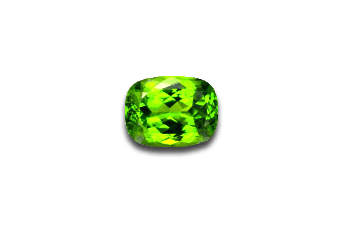PERIDOT
Peridot is a magnesium, iron silicate from the olivine family. It occurs in a narrow range of colors from yellowish or brownish green to greenish yellow. The amount of green depends on the amount of iron present. Peridot has been found in Egyptian jewelry made four thousand years ago. The "emeralds" Cleopatra was famous for wearing were probably peridot mined on an island in the Red Sea. Ancient Romans appreciated peridot and European medieval churches decorated shrines with the gem. The word peridot comes from Greek and means, "to give richness." With such a long history, it's not surprising that peridot has been found all over the world. Fine gems have been found in Egypt, Myanmar and most recently in Pakistan. Other notable sources are the United States, Australia, Brazil, China, Kenya, Mexico, Norway and Sri Lanka. Egyptian and Burmese material is in very short supply and the fine Pakistani material is only mined during the summer months, so customers born in August or celebrating a 16th wedding anniversary may have to search for very fine quality peridot.

Image Above: This gem is moderately durable with a hardness of 6.5 to 7 and fair to good toughness (resistance to breaking). Peridot is sensitive to sudden temperature changes, so care should be taken when cleaning. Warm, soapy water is safe.

